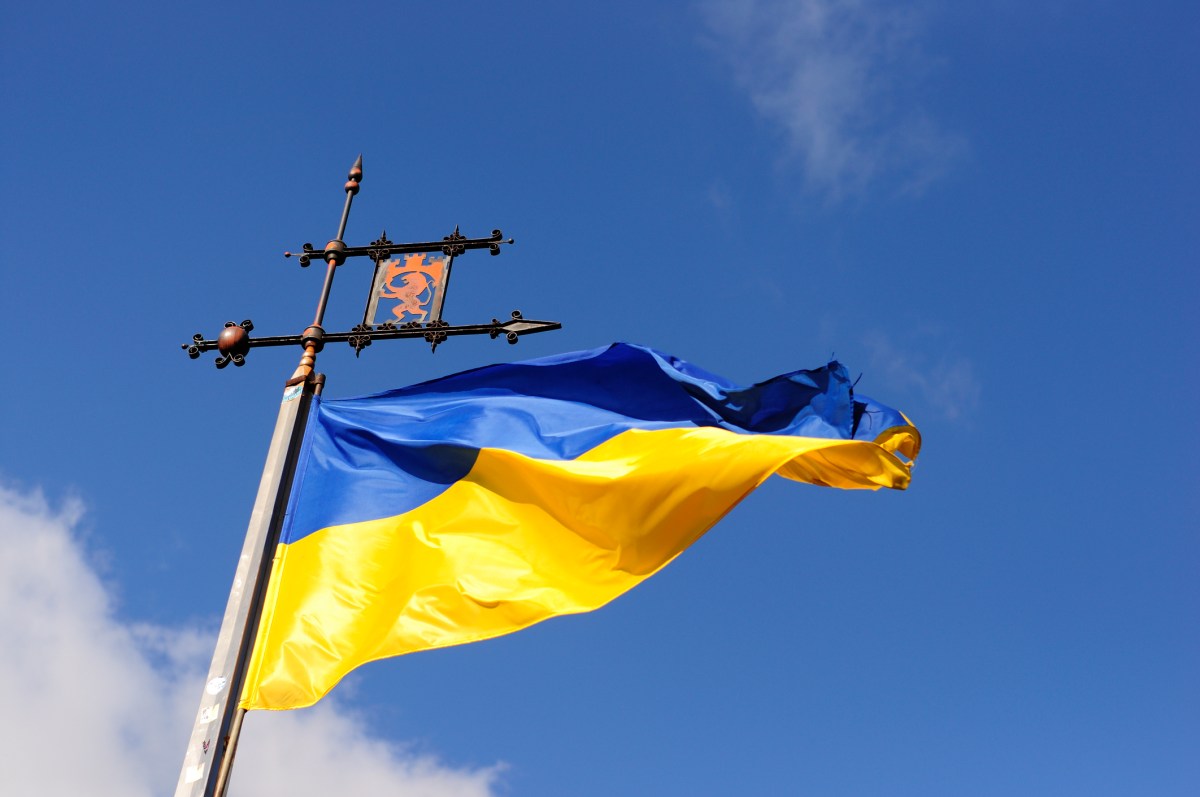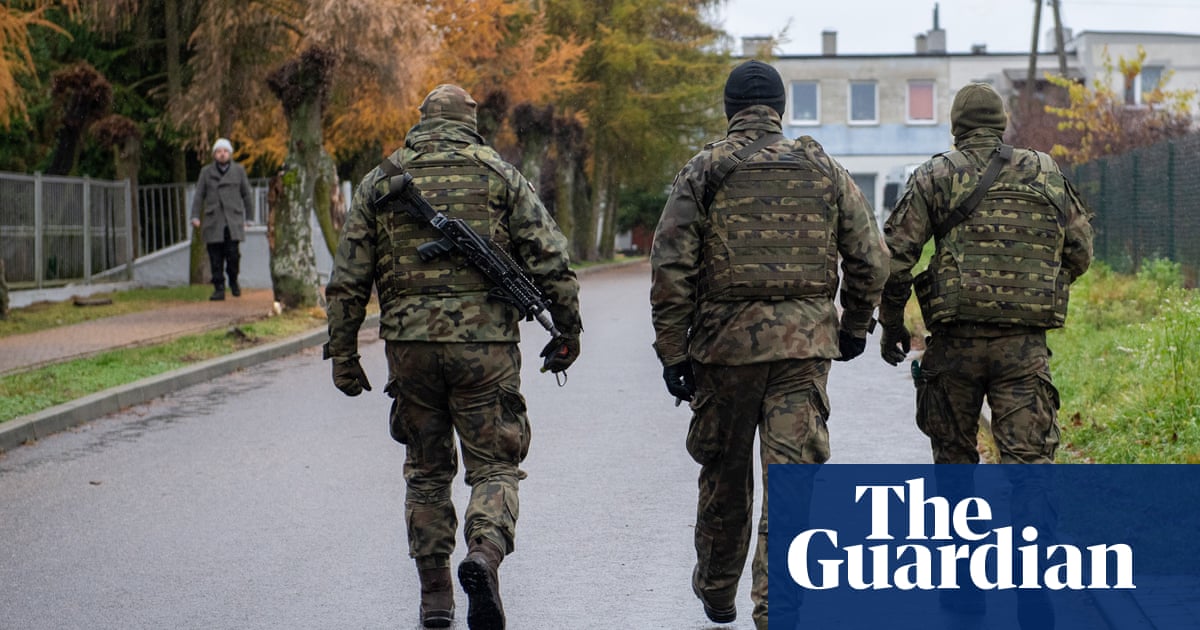Three years on, Europe looks to Ukraine for the future of defense tech | TechCrunch

Today marks three years since Russia’s illegal, unprovoked, and brutal invasion of Ukraine. The Ukrainian people have heroically fought the war with grit and determination, but they have also, against the odds, innovated on and off the battlefield.
In addition to establishing a defense tech initiative called BRAVE1, the country has also hosted tech conferences like IT Arena, even amidst the problems caused by the war.
Ukraine is now the leader in AI-enabled drone technology and become a magnet for Western companies and investors keen to support the country, and Europe. But is it enough? If the recent news is anything to go by, Europe is only now waking up to the fact that it will have to get closer than ever before to Ukraine if it is to maintain and defend its own security.
A recent report by VC investor Lakestar warned that Europe is facing its biggest threat in decades. Observers estimate it will take Russia 2-8 years to rebuild its army to the point where it could dare to attack Europe, but European NATO allies are not doing enough to build a credible deterrent, and have even scaled back defense spending by 30% since the 1990s. Meanwhile, the industry’s current production and imports are only a fraction of stock levels. At the same time, European investment in R&D is only 1/10 of the spending in the US.
Speaking exclusively to Lakestar’s Klaus Hommels at last month’s DLD conference, Hommels told TechCrunch: “You don’t need to have a magic ball to see that the Europeans need to put a lot of money into the defense sector.” For that to happen, he said, entrepreneurs need to see that there is funding available, then VCs will start to see startups appear: “Secondly, you needed some success stories, which you now have.”
“At the end, it is about sovereignty. If you don’t equip, if you don’t invest, then you won’t have that sovereignty,” he added.
That appears to be happening. With Trump signaling that Europe is going to be on its own, European defense Primes are surging, while European VCs are investing.
A billion dollars of venture capital was invested into European defense technology in 2024, a first for the continent, and a five-fold increase since 2018, according to Dealroom. VC investment into defense-related tech is outpacing any other type of investment, and the bulk of that is going into startups in Germany, the U.K., and France.
We also now have specialist defense tech funds, with the €1bn Nato Innovation Fund, and the new Estonian SmartCap €100m defense fund. Helsing, the UK/German defense tech startup backed by Spotify’s Daniel Ek and others, is now producing strike drones at volume and plans to build multiple factories around Europe.
But in order to invest in the right technology, Europe will have to look to Ukraine, because that is where future wars are being fought right now.
TechCrunch recently put a call out for Ukrainian dual-use and defense tech startups to update us on what they are working on. Below is what they sent us, in their own words.
Technary
Dual-Use: “Address the challenges of intercepting low-flying drones that are undetectable by radar. Approved by the Main Directorate of Intelligence of the Ministry of Defense of Ukraine. Civilians use an app to report drones, rockets, or planes directly to the military.
Founders: Hennadii Suldyn, Andrii Kosiak
Funding: Bootsrapped
Dropla
Dual-Use: De-mining operations is difficult. This Ukrainian-Danish company has delivered in the first stage of ESA ARTES program. It uses a fleet of UAVs equipped with Multi-modal sensors and then use cheap UGVs (Unmanned ground vehicle) to confirm the non-contaminated areas. Has a contract with the European Space Agency, been through a EU robotics accelerator, and supported by Export Import Fund of Denmark. Now has the biggest training dataset for landmine detection in Europe. 1m EUR in funding from Danish and German Angels.
SOC Prime
Dual-Use: “AI agnostic compute efficient line speed collective threat detection ecosystem.” This competes with SnapAttack, Cyborg Security and CardinalOps. A large private dataset of 1 million detection rules and 13,000 labels. Aimed at the cyber defense of companies who have expert innovation in particular niche (DFIR, CTEM, SIEM etc).
Founders: Andrii Bezverkhyi, Alex Bredikhin and Ruslan Mikhalov
Funding: $11.5 from DNX Ventures, Streamlined Ventures, Rembrandt Capital, Atlantic Bridge, J-Ventures, Tom Reilly, Greg Martin, Slavik Markovich, Mahendra Ramsinghani.
Swarmer
Dual-Use: This “is for operating drone swarms. “In today’s battlefield, operating drone swarms is manpower-intensive and inefficient. Traditional approaches demand a swarm of pilots. But Single operators are overloaded.” Recently returned from SRI Deep Tech Accelerator program in El Segundo. Finalists of DIGITALEUROPE’s Future Unicorn Awards as a Dual-Use Tech company in Brussels. Battlefield-proven since August 2023 with over 32,000 combat missions to date.
Founder: Sergey Kuprienko (Led AI and computer vision team at Ring.com (500+ people). Alex Fink (former VP Eng at Orah VR
Funding: $3 million
Kraken
Dual use: “Kraken is a multi-usage hybrid USV/UUV drone with AI capabilities for persistent and long-range underwater infrastructure monitoring and defense applications, enabling automated missions in GPS-denied environment without direct control from the operator.”
Founders: Pavel Panasjuk, Oleksandr Kvasha
Skyeton
Dual-Use: “A gliding munition, and a line of GLE, multi-mission gimbals. Raybird now can detect, illuminate, strike, return, and rearm – all in one mission cycle.A sub-25 kg EW-sustainable platform able to carry a loitering munition deep into the enemy’s territory. Equipped with a long-range laser designator. The laser illumination system allows precise targeting for guided munitions and artillery. Already been tested in combat conditions and is now operating on the front lines.
Ailand Systems
Dual-Use: Agriculture drones but also Landmine detection using drones, making demining operations faster, cheaper, and safer.
Founders: Dmytro Titov, Heorhii Shakula
Funding: $425K via D3 Fund, Nezlamni Fund, Google for Startups
Anima
Dual-Use: Anima addresses the inefficiencies of traditional mental health assessments, which have high false-positive rates (30–80%) and rely on subjective self-reporting, leading to stigma, underreporting, misdiagnosis, and unnecessary treatments. It has completed PTSD and concussion research and are now developing a product in this area.
Funding: Anima has raised $340,000 in pre-seed funding and is currently seeking an additional $500,000 to support growth and development.
Founders: Roman Havrysh, Sergiy Danylov
Aspichi
Dual-Use: We’re developing a VR application with education and mental health practices to combat PTSD.
Founders:Viktor Samoilenko, Max Goncharuk
Funding: 780K SMRK.vc, ZAS Ventures, Catalyst Impact Investor Club Syndicate
FuelWell
Dual-Use: A plug-in device, fuel promotor, installed on the fuel system of internal combustion engines. It reduces fuel consumption by up to 20% and CO2 emission by 15%, PM soot particles by 90%. The average pickup truck loses up to $1000 a year from poor combustion. A truck in logistics loses up to $11,000 a year. Selected to participate in the EIT Mobility acceleration.
Funding: $550,000
Laser Guard Systems
Dual-Use: We are solving the problem of vulnerable protection against drone attacks and ground intrusions by developing an autonomous counter-intrusion platform that detects, tracks, and neutralizes aerial and ground threats using AI, thermal vision, and advanced defense mechanisms. “Our systems are actively protecting the Kyiv Hydroelectric Station and securing critical areas in the north and south of Ukraine from drone attacks.”
Founders: Pavlo Potichnyi, Oleksandr, Kyrylo.
HIMERA
Dual-Use: Existing battlefield communication systems never combine relevant, reliable, battle-proven functionality with affordability and scalability. This leads to a situation where the tactical comms available to troops are unreliable or often unavailable in sufficient numbers, leading to costly inefficiencies in combat operations. Using off-the-shelf components, we deliver a tactical transmission system with secure, battle-proven functionality, including AES-256 encryption, MANET, and frequency-hopping. The Boryviter Center of Excellence in Ukraine which trained more than 27,000 Ukrainian soldiers to pilot drones and use communications equipment included HIMERA tactical communication products into its regular training program this week.
Funding: $1.2M Freedom Fund VC, United Angels Network, Andriy Skoropad, Arnaud Dassier, Green Flag Ventures, Nezlamni Fund, Dave Morgan.
Strategy Force Solution
Defense Tech: Mafka AI solves the problem of manual drone operation limitations by enabling fully autonomous missions that are resistant to electronic warfare (EW) and GPS-independent. We simulate a pilot’s behavior based on the mission goal and environmental analysis. Our AI handles route planning, obstacle avoidance, and target detection, thinking like a real pilot executing a task. It eliminates the need for a skilled operator, reducing human error, reaction time, and operational costs, while ensuring drones can execute missions even in hostile environments. Completed the SRI University acceleration program in the U.S. in January. Finished a bootcamp with MITS Capital. Currently raising investments to start production.”
Funding: Received a grant from Brave1.
Founders: Andrii Honcharyk, Ihor Lutsenko
Terminal Autonomy
Defense: Secured largest nato contract for loitering munitions. Ai enabled loitering munitions. Scaled to the largest nato contract for this category, first lethal drone procured by Germany.
Buntar Aerospace
Defense: “Buntar Aerospace delivers a holistic solution that combines UAV survivability with AI-driven operational support, ensuring that reconnaissance teams can gather actionable intelligence efficiently and safely, even in the most challenging environments.” We’ve just launched a new model with twice the flight time. Buntar 3 is a UAV designed for long-duration flights and stable performance in challenging conditions. Buntar Copilot is an AI-driven control and coordination system that enables a “carousel” operation model.
Funding: $3.2M backed by a mix of venture funds and private investors from the United States, Ukraine, and Europe. D3, Sukna Ventures, Nezlamni and others.
NORDA Dynamics
Defense: Low FPV efficiency. Developed autonomy modules for all types of mass market UAVs. It increases efficiency from 30 to 80% which could save Ukraine approximately $750M annually. Founders mostly engineers, all Ukrainians with over 10 years of experience helping Ukrainian armed forces.
Funding: MITS capital, few angel funds, $250K
Clarity
Defense: Analyzes large amounts of aerial reconnaissance data from the battlefield. Won the pitching contest at the DEFENSE TECH INNOVATIONS FORUM 2025 in Kyiv, Trailblazers category. Uses AI model trained on the actual battlefield reconnaissance data gathered by the Armed Forces of Ukraine.
Founders: Alex Borodin
OpenMinds
Defense: Russia and China spend around $12B annually to spread their influence and propaganda worldwide, disrupt elections, and manipulate public opinion. OpenMinds helps counter these threats. We support diplomatic and national security sectors with threat intelligence and analysis of high-risk and censored environments, detecting influence operations and helping execute the counter-influence response.”SHowecased at the Munich Security Conference. Using millions of data points— from media landscapes to real-world behavioral data — we build proprietary machine learning models to detect threats and deliver solutions for preventing the spread of authoritarian influence.”
Funding: Bootstrapped but are planning to open a round of investment soon.
TELETACTICA
Defense: “Reliable, real-time video and data transmission in high-threat environments faces severe challenges that extend far beyond technical glitches. We’ve developed a reliable communication system combining custom hardware with proprietary software. Designed with improved reliability under jamming conditions; lightweight, portable modems compatible with various systems; custom antennas.
Funding: $55,000, MITS Capital and angel investors. Now we’re actively engaging with additional funds to close our SEED round as quickly as possible.
ARMOR
Defense: Quick, precise, and safe engagement of enemy targets from a wide rage of weapons while significantly saving ammunition. Pitched at the Defense Tech Innovations Forum 2025 (Brave1) event and received an award as the best startup in the Seed category. Traditional methods of artillery and weapons systems are inefficient. Our software is combined with a regular tablet to neutralise enemy targets in just 1 to 3 shots and reduces ammunition usage by over 10 times.
Founders: Oleksii Havrysh, Kostiantyn Brendel, Andrii Moruha
Farsight Vision
Defense: It’s a challenge transforming data from reconnaissance UAVs into digital maps and 3D models. Farsight Vision converts flight footage into digital 2D and 3D twins for real-time intelligence, in GNSS-denied environment, making analytics and situational awareness convenient and accessible while saving time and effort.
Funding: 774000 EUR from Darkstar VC Fund and Freedom Fund VC
Ark Robotics
Defense: Ark Robotics builds Frontier, a tactical autonomy platform that allows robotic fleets to integrate seamlessly into secure networks, enabling real-time coordination, autonomy, and resilience against electronic warfare. Deployed in over 20 frontline units including Ukraine’s Unmanned Systems Forces. Strategic partnerships with NATO agencies, with expansion into Poland, Estonia, and other European defense markets.
Funding: Backed by early-stage deep-tech and defense-focused investors. Specific names under NDA.
Vidar Systems
Defense: Acoustic sensors for detecting enemy artillery. The military uses such systems to quickly detect and destroy Russian artillery positions, primarily mortars. Vidar’s systems use triangulation and AI. Each microphone hears the same shot in its own way and determines the direction relative to its position. The computer then collects data on the direction of the explosion from three or more microphones and overlays it on a map.
Funding: $0.7M+ , Presto Ventures, several smaller funds, several angels.
Biostream
Defense: Problem: Up to 50% of battlefield deaths could be prevented with timely intervention, but there is no way to track a soldier’s condition or location in real time. Solution: A wearable device that detects early signs of hemorrhage, dehydration, and other critical conditions, sending secure geolocalized alerts to nearby medics for faster response.
Founders: Mikita Zabuga, Sophia Metz, Chris Mussett
Related
EU denies picking on US tech giants, says US also…
BRUSSELS (Reuters) - Europe's new tech rule aims to keep digital markets
€450M to drive green data infrastructure, the next startup hub,…
This week we tracked more than 70 tech funding deals worth over €1.3 billion, and over 5 exits, M&A transactions, rumours, an
European tech sector poised for stronger 2025, says Monument Group;…
Let’s kick things off with tech! Monument Group’s Zac Williams expects a big spike in European technology deals in 2025, as the region offers more appealing
Women still marginalised in Europe’s Tech Ecosystem
European startups founded or co-founded by women raised €10.2B in 2024 across nearly 2,000 transactions, according to Pitchbook’s latest study. This repr










